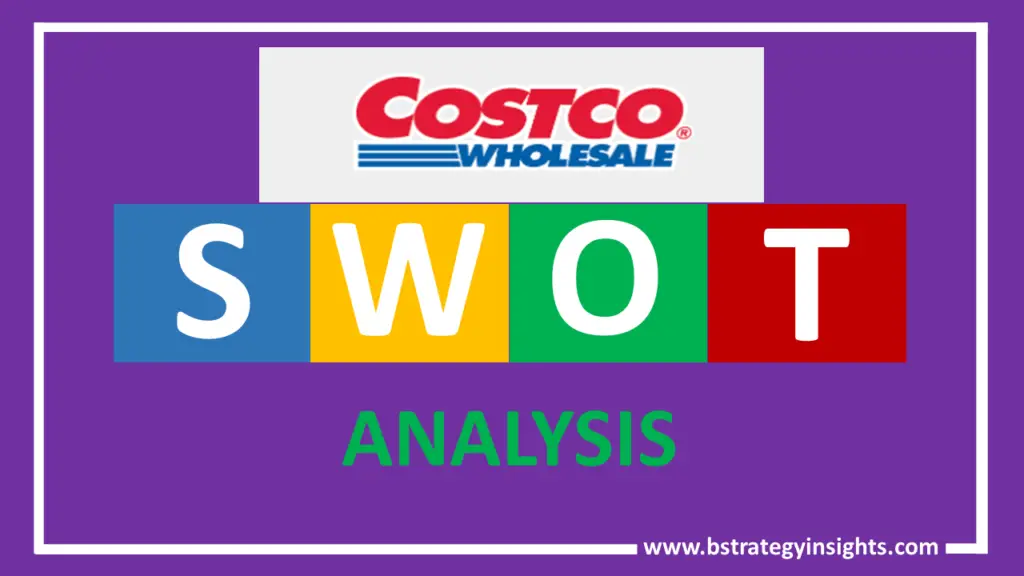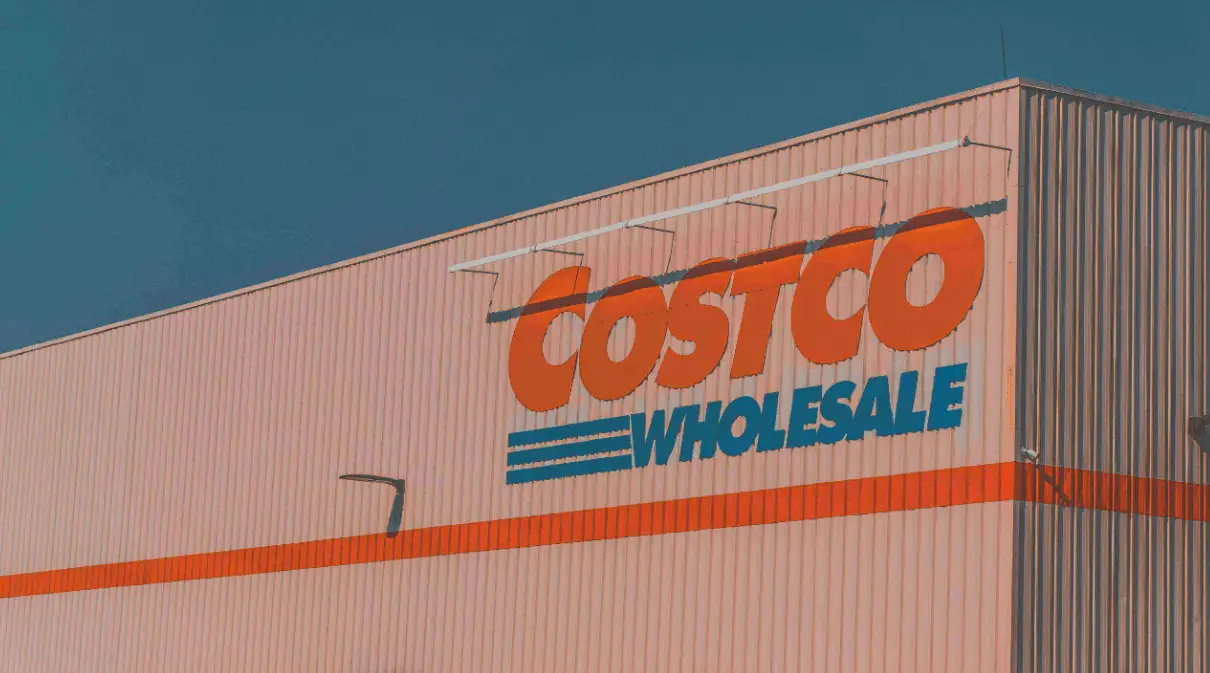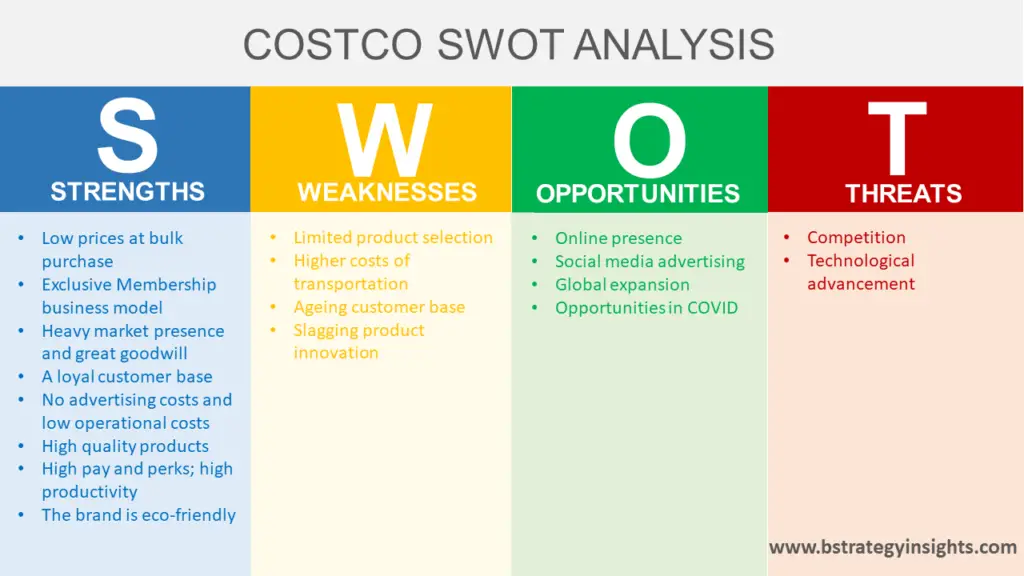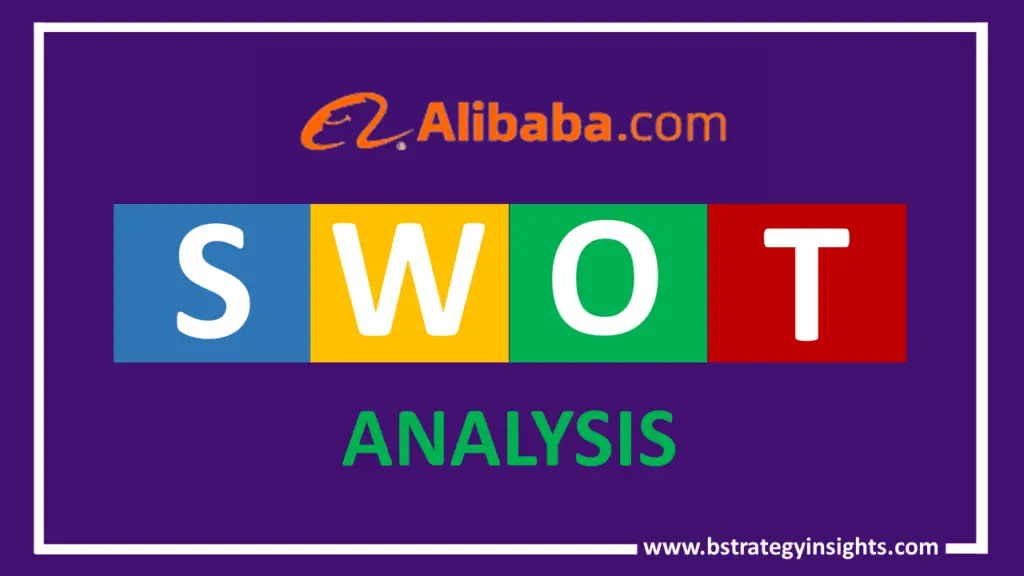
Costco Wholesale Corporation is an American-based multinational that differentiated itself from the huge competition in the retail space through its membership-only model of operation. Its customers/members are able to buy in bulk at attractive discount prices. Some of the products are private and can only be found at Costco. The following is an evaluation of Costco’s SWOT analysis which consists of strengths, weaknesses, opportunities, and threats.

Costco – At a Glance
| Name | Costco Wholesale Corporation |
| Website | https://www.costco.com/ |
| Founders | James Sinegal, Jeffrey Brotman, Sol Price |
| Chief Executive Officer (C.E.O.) | W. Craig Jelinek |
| Tagline | Simplifying home and Life |
| Headquarters | Issaquah, Washington, United States |
| Type of Corporation | Public |
| Year Founded | July 12, 1976 (as Price Club), September 15, 1983 (as Costco) |
| Revenues (2019) | $44.769B |
| Key Products/Services | food and sundries, hardlines, fresh food, softlines, and ancillary. There are other memberships that offer other services like real estate, home and car insurance, and travel services among others. |
| Key Competitors | WalMart, Home Depo, Amazon.com, Publix Supermarkets, Target, The Gap, CVS health corporation and Kroger |
Before jumping into the detailed SWOT analysis for Costco, let’s go through the high-level summary. Then we will go into detail about the analysis of the strengths, weaknesses, opportunities, and threats of Costco. So let’s get started!

Costco’s Strengths
Low prices at bulk purchase
Costco has extremely low prices when compared to its competitors. This strategy has helped Costco differentiate itself in the crowded retail industry. For instance, for the last 34 years, Costco has been selling their quarter-pound 100% beef hot dog and 590 ml drink at $1.5. For decades now, Costco has stocked high-quality products that are sold in bulk quantities for very prices in stores that are designed like warehouses. Costco wants to be known by the mantra of high quality-low costs.
Exclusive Membership business model
The brand’s membership model is a unique one; members have required to pay up a membership fee of $60 annually for the standard Gold Star membership and $120 for the Exclusive package. Only these paid-up members are allowed to shop at Costco.
The organization has witnessed increased growth in this membership. It is this growth in membership renewal rates that drives Costco’s bottom-line growth as it generates a major part of its profits from its membership fees and not from the low-margin sales on its products. In 2020, Costco registered $3.54 billion in profits in membership fees and a total net income of $4 billion.
Heavy market presence and great goodwill
Costco wholesale 804 warehouse locations globally, an increase from 785 stores in the previous year. This provides better accessibility for its customers.
A loyal customer base
Costco has built a huge and loyal customer base that is effective even amidst the COVID pandemic. Its global renewal rate grew to 88.5%, a 10 basis points year-over-year increase. The same growth was seen in Canada and the US, which registered 90.9% to 91%. As of 2020, there were 105 million Costco cardholders all over the globe.
No advertising costs and low operational costs
Costco Wholesale does not have a budget for advertising like is the practice among its competitors, including Walmart, which employs about 2.4 billion in advertising. If the company had had advertising costs even as low as 2%, it would translate to wiping out 70% of its profits. It, however, uses spring for mailers that are targeted to the brand’s prospective customers. It also sends coupons to its existing customers.
Costco also saves a lot from economies of scale due to its large purchases. These savings are passed on to customers.
With all these savings, the organization becomes less reliant on emphasizing huge profit margins in sales. Customers can therefore have huge savings on their purchases.
High-quality products
Costco is keen on providing the highest quality possible at competitive prices for its members. Costco is able to achieve this through direct purchases from suppliers and also from direct bargains. With high-quality standards at the highest price possible, Costco is able to improve its brand loyalty and goodwill.
High pay and perks; high productivity
Costco pays its employees abnormally well when compared to other similar companies in the market. As of February 2021, Costco raised its minimum wage for its workers to $16/hour. The company’s full-time employees are able to receive salary enhancement two times a year, whereas part-time employees are able to receive their pay increase once annually. Costco’s workers also receive bonuses twice a year. When all these are combined, Costco’s workers cumulatively earn a minimum of $24/hour. This minimizes turnover and increases productivity.
The brand is eco-friendly
The company has a robust strategy for being eco-friendly. It has proper waste management systems, has significantly reduced carbon emissions, and improved energy management systems, among others.
Costco’s weaknesses
Limited product selection
In terms of product lines, Costco has a wide variety of products, including clothing, jewelry, furniture, toys, and lots more. But with regards to the depth of variety for individual product lines, the brand is limited. For instance, on average, you are likely to find 3700 product SKUs in Costco as compared to 150,000 product SKUs in similar stores like Walmart and 80,000 in Target. This additionally limits the brand from attracting customers who are keen on wider options for selection.
Higher costs of transportation
When compared to similar outlets like Amazon and Walmart’s e-commerce, bulk purchases from Costco attract higher costs of transportation.
Ageing customer base
The majority of Costco’s customers are households that earn an average of $100,000 annually; they own vehicles, buy in bulk and live in the suburbs. The millennial population, however, prefers quick shopping through a local shop or online sites and would like their shopping delivered to their doorsteps. Costco has a limited social media presence; this additionally makes it difficult for the brand to attract the huge millennial population.
Slagging product innovation
When compared to competitors, Costco has a long way to go. This slag has had Costco’s competitors gain significant competitive advantages in the market.
Costco’s Opportunities
Online presence
Costco has a huge opportunity in e-commerce and in developing its online presence. The year ended in August 2020 saw the brand register growth in online sales of 49.5% in the last 12 months. Costco saw an accelerated growth rate of 90.6% for its e-commerce in the 4th quarter; this was much faster than the 64.5% year-over-year growth rates that were recorded for the 3rd quarter that ended on May 10.
Social media advertising
Social media is now commonplace since the internet and enabling devices have become ubiquitous. The brand has already registered impressive performance from e-commerce and should therefore continue growing its efforts in this direction.
Global expansion
Costco has a heavy presence in the US and Canada, it is yet to venture into the global markets, which are vast with many opportunities.
Opportunities in COVID
Costco has already reaped bountifully in revenues during this COVID period. Many households are buying in bulk and stocking up for the unknown future. Costco should boost its system’s efficiencies and effectiveness to ensure even more growth.
Costco’s Threats
Competition
The retail space is ripe with competition, and Costco has fierce competition to face from rival companies like Walmart, Amazon, and Target, who are very aggressive competitors.
Technological advancement
With the world going digital, there is every need for brands to be up-to-date with the changing technologies and as well leveraging on them to gain a cutting edge over the competition. This calls for more costs in the acquisition of technology and, at the same time, being mindful of the shifts to more recent and effective technologies. Any lagging in this regard will see Costco lose its market share.
Conclusion
Costco has done great in its exclusive membership business model, with very low prices and high-quality products, having a positive brand image, keeping down its operational costs, and ensuring the brand is eco-friendly. It is remarkable how it has taken advantage of COVID to grow its e-commerce revenues. The brand should strategically consider more focus on online and global expansion strategies.


